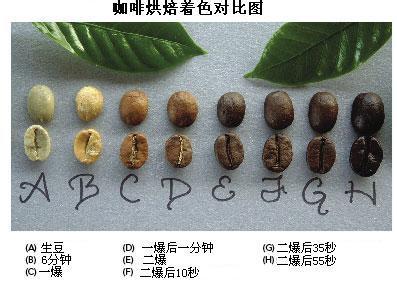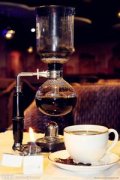The baking process of coffee after picking
Raw coffee beans are small, dense and hard, and people in the coffee industry may not recognize born coffee beans. Raw coffee has a taste similar to that of grass, but in terms of appearance and flavor, it has almost nothing to do with the coffee beans we usually imagine. It was during the baking process that the strange flavor of coffee and the fragrance of the dream took place.
Generally speaking, coffee roasting is a "moment-temperature" interdependent process in which physical changes and chemical spinning occur in raw coffee. In the initial stage of baking, the raw beans gradually turn yellow, and the water is gradually admired. when the temperature rises to a certain threshold, the coffee beans burst for the first time, and the size of the coffee beans becomes larger. In the second stage of baking, with the continuous increase in bean temperature, a series of complex chemical transformations begin to appear, and the size of coffee beans continues to grow and the color becomes darker. As the temperature continues to rise, aromatic oils form on the bean surface, resulting in a second burst. Many ingredients extracted from brewing coffee do not exist at all in raw coffee, but occur in the process of coffee roasting.
Finally, there is a decision on when to finish baking: the large roasting bin of coffee beans goes into the cooling chamber to cool, allowing the beans to curb chemical spinning hooks.
The following pictures show the color change of coffee beans during roasting:

Roasting is the last and most important step in the processing of coffee beans after being picked. Raw coffee beans cannot be directly used as drinking coffee. All coffee beans must be roasted before grinding and brewing.
Important Notice :
前街咖啡 FrontStreet Coffee has moved to new addredd:
FrontStreet Coffee Address: 315,Donghua East Road,GuangZhou
Tel:020 38364473
- Prev

Coffee tanning method
Sun-dried beans have a complete natural mellow flavor, gentle fragrance and more gum; washing laws have a good mellow taste, a high degree of fragrance and active sour taste.
- Next

How to control the roasting degree of coffee?
People's five senses are the most commonly used and the best tool to control the level of baking.
Related
- What is the meaning of lactic acid fermentation with coffee bean treatment?
- How to judge the state of foam by sound?
- How does the latte pull out the unicorn pattern? Come to get for a little trick to improve the flower pull!
- Will flower pulling affect the taste of the latte?
- Do you know the history of coffee?
- The difference between honey treatment and sun washing what is raisin honey treatment?
- What kind of milk can a novice use to make coffee foam to keep the foam longer? The correct method and skills of milking tutorial sharing
- Why do washed coffee beans taste sour? Flavor characteristics of washed Coffee
- Introduction to the skill of how to practice the size and height of water injection around the circle of hand-brewed coffee
- How do beginners practice coffee flower drawing from scratch?

